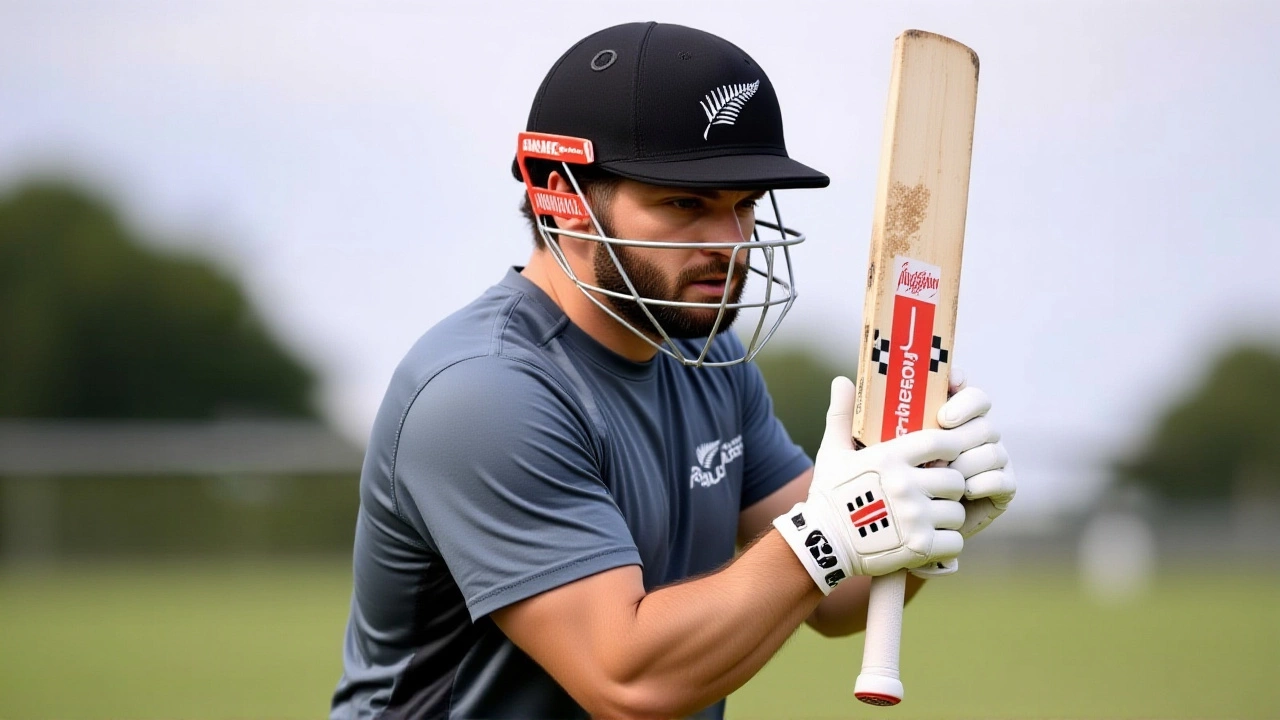When Phil Salt, England’s 28‑year‑old wicketkeeper‑batsman, walked out to the crease at Hagley Oval on 20 October 2025, few could have guessed he was about to write a chapter in the ground’s history books.
In a blistering 85‑run innings, Salt powered England to a 236 for 4, the highest T20I total ever recorded at the Christchurch venue. The chase that followed saw New Zealand tumble to 171 all out, handing the tourists a 65‑run victory in the second Twenty20 International of the 2025/26 England tour.
Setting the scene: why the match mattered
The encounter was officially logged as T20I #3532 by the International Cricket Council and formed part of the KFC T20 Series. It wasn’t just another game; the series was a litmus test for both sides ahead of the upcoming World Cup qualifiers. England, under the stewardship of the England and Wales Cricket Board (England and Wales Cricket Board), were hungry for a statement win, while New Zealand, represented by Kane Williamson, captain of New Zealand Cricket, had elected to field first, hoping their bowlers could nip the early aggression.
How the record total was built
Salt’s on‑field aggression was obvious from the first ball. He lofted a six over mid‑wicket within the opening over, then followed with another boundary that left the New Zealand fielders scrambling. By the time he was dismissed – a crisp catch at deep square leg – he had already carved out a personal best T20I half‑century, his fifth in the format.
Joining him was Harry Brook, the 25‑year‑old Yorkshire fire‑brand. Brook steadied the ship after the early wickets, rotating the strike and hammering a couple of sixes that stretched the total past the 200‑run barrier. While his exact run tally wasn’t highlighted in the broadcast, his partnership with Salt set the platform for the late‑order fireworks.
England’s fast bowler Brydon Carse added early bite, grabbing two wickets in the second over and rattling the Black Caps’ top order. Yet it was the spin duo of Liam Dawson and Adil Rashid that applied relentless pressure through the middle overs, forcing New Zealand into a catch‑only dismissal pattern that would later become a statistical rarity.
The chase: a cascade of catches
New Zealand’s response began disastrously. Carse’s early breakthroughs left the Black Caps 15 for 2 after just two overs. Middle‑order stalwart Mark Chapman attempted a recovery, but a sharp catch at deep mid‑wicket saw his innings end without much fanfare.
What followed was a bizarre pattern: every dismissal was a catch. According to TVNZ analysis, this was only the 13th instance of a complete “caught‑only” wicket‑fall in men’s T20I history. No direct hits, no run‑outs – just clean hands in the field. The spin of Rashid and Dawson, combined with Carse’s disciplined line, left the New Zealand batsmen with little room to maneuver.
Captain Mitchell Santner, who also bowled a few overs, managed a brief cameo with the bat, but his effort was eclipsed by the relentless catch chain. By the time the scoreboard read 171 all out, the English side were celebrating a record‑breaking total and a comprehensive victory.
Player of the Match: why Brook earned the nod
Post‑match, Brook was unanimously voted Player of the Match. In his interview on the field, he summed up the day’s feeling: “It felt good. It’s always nice to contribute, and to do it alongside Salty who has been very successful for us in this new era. The sun helped the pitch stay flat, and it was just nice to hit a few out of the park.” He cheekily added, “Sorry Mitch!” – a nod to the dismissal of Santner’s delivery that sparked his favorite six.
The England side, meanwhile, praised the collective effort. Salt, still buzzing from his knock, said, “Getting 85 in these conditions is special; the pitch was a bit flatter than usual, which helped us get the timing right.” Coach‑level insights from the England and Wales Cricket Board highlighted the importance of the spin spell: “Rashid’s economy in the middle overs was the decisive factor. When a batting line‑up can’t score off the spinners, pressure builds fast.”
Key facts
- Venue: Hagley Oval, Christchurch, New Zealand.
- Date: 20 October 2025 (local time 10:31 PM NZDT, UTC+13).
- England total: 236/4 – highest T20I score at Hagley Oval.
- New Zealand total: 171 all out in 19.2 overs – all dismissals were catches.
- Margin: England won by 65 runs.
- Record: 13th ever “caught‑only” dismissal pattern in men’s T20I.

What this win means for the tour
Beyond the headline‑grabbing total, the result puts England in a commanding position in the bilateral series. With one T20I left, the tourists hold a 2‑0 lead, essentially clinching the series. For New Zealand, the loss is a wake‑up call ahead of the upcoming One‑Day International leg, where the batting line‑up will need to adjust to spin‑friendly conditions.
Analysts from ESPN noted that the spin dominance may influence selection choices for the World Cup, where pitches in the sub‑continent often favor turn. Rashid’s disciplined spell, taking 2 for 14, could see him retained for the big tournament.
Historical context
This was the 3532nd men’s T20 International since the format’s birth in 2005. England’s 236/4 shattered the previous Hagley Oval record of 219 set by the West Indies in 2020. Moreover, the “caught‑only” dismissal pattern is a statistical oddity: the first such occurrence was recorded in a 2012 match between India and Sri Lanka, and only a handful of teams have managed it since.
Both cricket boards – the England and Wales Cricket Board and New Zealand Cricket – praised the quality of the contest, calling it a showcase of modern T20 cricket’s blend of power hitting and tactical nuance.
Looking ahead
The next fixture on the tour is a one‑day International scheduled for 24 October 2025 at the Basin Reserve, Wellington. Both sides will likely rotate a few players, but the momentum from this T20 win is firmly with England.
Fans can expect further reactions from Brook and Santner in the coming days, as well as in‑depth analysis from former players who will dissect why the spin attack proved so lethal on a “flat” surface.
Frequently Asked Questions
How does England's record total impact their World Cup prospects?
The 236/4 illustrates England’s depth in power‑hitting and adaptability to flat pitches. Selectors will likely keep the top order – Salt and Brook – unchanged for the World Cup, confident they can chase or set big totals on any surface.
Why were all New Zealand wickets caught?
England’s bowlers forced short, defensive shots. The combination of Carse’s early pace and the tight spin of Rashid and Dawson created edges that the fielders collected cleanly, resulting in a rare "caught‑only" dismissal sequence.
Who were the standout performers for England?
Phil Salt’s 85‑run blitz and Harry Brook’s steady consolidation earned them player‑of‑the‑match honors. In the bowl‑ing department, Adil Rashid’s economical middle‑over spell and Brydon Carse’s early breakthroughs were crucial.
What does the result mean for New Zealand’s T20 strategy?
The loss highlights a vulnerability against disciplined spin on flat tracks. Coach Gary Stead may look to add variations in the middle order and practice against high‑pace spin to avoid similar collapses.
When is the next match in the series?
The tour’s next fixture is a One‑Day International on 24 October 2025 at the Basin Reserve, Wellington, where both teams will look to fine‑tune their line‑ups ahead of upcoming international commitments.

